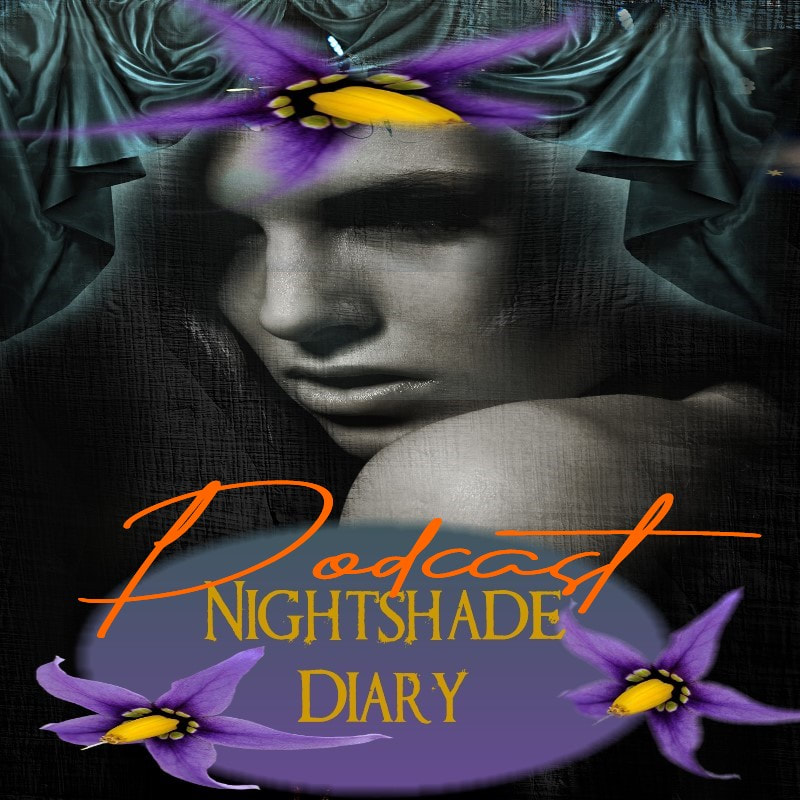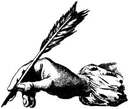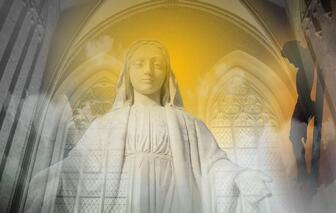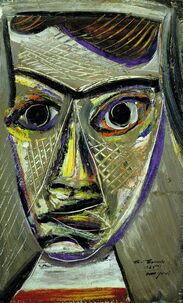 By M.P. Pellicer | Stranger Than Fiction Stories Some paintings by the effect they have on the subjects portrayed, or those who view them are known as disturbed. They carry the essence of the artist that in some instances turns out to be unlucky, or plain deadly.  Gorky and his mother c.1912 Gorky and his mother c.1912 ARSHILE GORKY Arshile Gorky (born Vostanik Manoug Adoian) is an Armenian American artist born in 1904, in a village on the shores of Lake Van in the Ottoman Empire (present day Turkey). His mother starved to death in 1919, while living in Yerevan, Armenia. As Armenian Christians, they were a minority who were oppressed by the Ottoman and later by the Turkish rulers. His mother Sushan was married at 14, and she witnessed when her young husband was murdered by Turkish soldiers for being part of a rebel force. When she was 19, she was wedded to a widower, Sedrak Adoian, 36. They had three children, and Gorky being the only boy was favored by his mother. She expected him to become a poet or a priest, but she also warned him that he would suffer a dark fate. She called him "the black one, the unlucky one who will come to a no-good end." As an adult he called it the "family curse". In 1920, he arrived in America and went to see his father who had abandoned the family in 1908, and moved to Rhode Island. Three years later Gorky enrolled in the New England School of Art in Boston, but he was mostly self-educated. 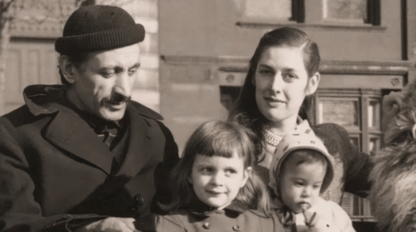 Gorsky with his wife and daughters c.1940s (Source - Peacock Pictures) Gorsky with his wife and daughters c.1940s (Source - Peacock Pictures) He was romantically involved with artist Corinne West, but in 1941 he married Agnes Magruder a wealthy socialite, 20 years his junior. His pet name for her was Mougouch, an Armenian endearment. As a true Bohemian she had moved in with him prior to their marriage. It seemed he was doomed to relive a pattern of abandonment with his choice of spouse. She said of their relationship, "I told him that I felt it was quite impossible to be faithful. How one person couldn't be all things to everybody from birth to death. Surely there were all sorts of facets to everybody's personality. When I first went to live with him, I couldn't understand what I'd done. It was all right then because I had a bolt hole. I could go and see my parents or my grandfather on Cape Cod. I could do things, couldn't I? But once I was married, well, he didn't want me to go out any more, working nights or days." 1946 was not a good year for Gorky. His studio housed in a barn burned down taking 30 of his paintings and his library. It seemed this was a family tradition. "His grandmother had set the local church on fire in revolt against God who had allowed her son to be tortured by the Turks. So when his studio was burning, he acted as if under that curse, not informing the fire brigade but trying to staunch the flames himself." After the fire he painted an homage to the works he lost, naming two of his paintings Charred Beloved I and Charred Beloved II. In 1947, he underwent surgery for a colostomy for rectal cancer, and his estranged father died. During this time his wife had an affair with fellow artist and friend Roberto Matta. 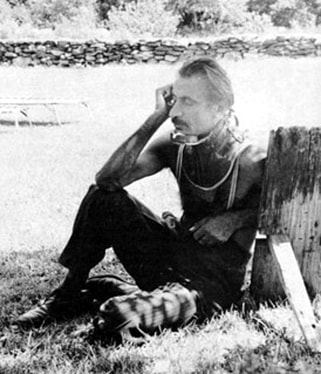 Gorsky with his neck brace on c.July, 1948 Gorsky with his neck brace on c.July, 1948 His wife left in the summer of 1948, with their two young daughters as she could no longer cope with her husband's depression and his increasing violence. She would go on to marry writer Xan Fielding. The same week she left, he was a passenger in a car driven by gallery owner Julien Levy, who crashed while under the influence of alcohol. Gorky's neck and back were broken, and he had to wear a neck brace. It temporarily paralyzed his painting arm. On July 19, he returned home, "driven by Isamu Noguchi, as well as Wilfredo Lam and his wife Helena. On the way, Gorky asked to stop to see Dr. Weiss, his psychiatrist. When he got back in the car, he told Noguchi that the doctor wants to perform a lobotomy on him." On July 21, 1948, he told his students and a neighbor he meant to kill himself. He took off his neck brace, and hung himself from the rafters of his barn studio in Connecticut. He wrote "Goodbye My Loveds" in chalk on a wooden crate. Ironically, a few weeks before Life magazine had written a story about his barn-studio. His barking dog brought a neighbor to the barn where his body was discovered. "After Gorky died, Magruder traveled Europe with Matta, placing her children in a Swiss boarding school rather than allowing Gorky’s sister in Chicago to adopt them." Was there something about Gorky's ill fortune which imbued his art? There are rumors that his paintings produced from 1904 to 1938 were cursed. In 2003, an Armenian activist told a researcher: Have you ever heard of 'Gorky’s curse'? 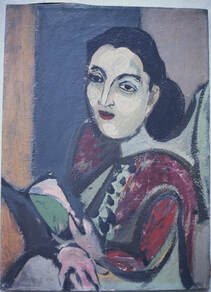 Portrait of Anna Walinska c.1937 Portrait of Anna Walinska c.1937 On March 1, 1962, fifteen of Gorky's paintings were on American Airline Flight 1 to Los Angeles for an exhibition. Two minutes after take off the plane rolled over and crashed into a swamp taking 87 passengers, 8 crew members and Gorky's paintings into a muddy grave. Among the passengers were Admiral Richard Lansing Conolly a retired Chief of Naval Operations, George T. Felbeck, VP of Union Carbide, W. Alton Jones former president and chairman of Cities Service Company and friend of Dwight D. Eisenhower, Louise Eastman (of Eastman Kodak fame) whose daughter Linda would go on to marry Paul McCartney, and Emelyn Whiton, 1952 Olympic sailing gold medalist. In 1937, Gorsky painted a portrait of his friend and fellow artist Anna Walinska. It would hang in her family's home for many years and was never publicly exhibited. The portrait was sold by Walinska in the late 1970s when her rent-stabilized apartment was converted into a co-op and she needed funds. The Bodley Gallery accepted it for consignment, but it didn't sell. An auction at Sotheby's failed to produce a buyer as well. A private broker at Sotheby's found a buyer where it was sold for "next to nothing". It is one of about 50 of Gorky's paintings that have been lost through the years. In 2021, underneath one of Gorky's paintings The Limit (1947), Gorky's daughter Maro found another one of his missing works known as Untitled (Virginia Summer) which is believed he produced in the summer of 1947. 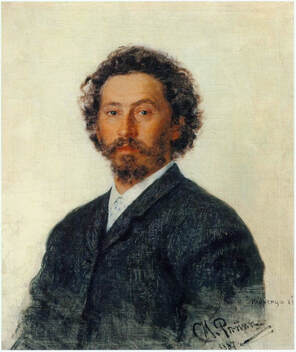 Ilya Repin self portrait c.1887 Ilya Repin self portrait c.1887 ILYA REPIN Ilya Repin was a famous 19th century Ukrainian painter born in 1844. He was a teenager when he started to paint, and he won his first prize when he was 25 years old. In 1872, he was awarded a commission by the Grand Duke Alexander Alexandrovich. The same year he married Vera Shevtsova. The 15-year marriage produced four children, during which Repin had various affairs. In 1885, he suffered a setback with his portrait of Ivan the Terrible killing his own son, which caused a scandal and it was removed from exhibitions. Working on this painting paralyzed his right hand, and he learned to work with his left hand. Eventually Repin was given new commissions, and received many accolades for his work throughout his life. 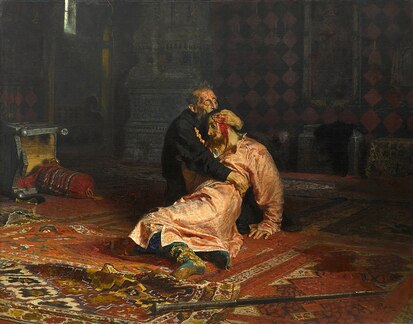 Ivan the Terrible and his son Ivan c.1885 Ivan the Terrible and his son Ivan c.1885 In 1890, he met Natalia Norman who became his common-law wife. In 1899, he built a country house called the Penates where they lived for the next 30 years, and entertained Russian society. He was appalled by the violence and terror the Bolsheviks demonstrated following the October Revolution. In 1914, Natalia sickened with tuberculosis and died. He died in 1930, age 86, and was buried at his country house. The terrible reactions to Repin's work came long before his death. He was an acclaimed artist, but being his subject carried a heavy cost not paid in money. It seemed many of his subjects died unnatural deaths after sitting for him.  pianist Louise, Countess de Mercy-Argenteau c.1890 pianist Louise, Countess de Mercy-Argenteau c.1890 Between 1870 to 1873, Repin produced Barge Haulers on the Volga which depicts 11 men dragging a barge on the bank of the Volga River. The men who were healthy when they posed, began to die once it was completed. In the late 1870s he painted A man with an evil eye, using his godfather Ivan Radov as a model. Radov was known as a sorcerer, and Repin suffered from fevers once it was finished, which might have inspired the title of the painting. It exhibited in 1878, and received acclaim. Mussorgsky (1839-1881), Pisemsky (1821-1881), Pirogov (1810-1881), pianist Louise, Countess de Mercy-Argenteau (1837-1890), Fedor Tiutchev (1803-1873) died during or after Repin completed their portraits. Right after the artist finished his work The ceremonial meeting of the State Council in 1903, officials who were painted on the canvas, were killed during the First Russian Revolution of 1905. Prime Minister Stolypin was assassinated in Kiev in 1911, after Repin painted his portrait. 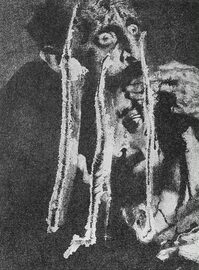 Ivan the Terrible and his son Ivan - damaged in 1913 by Abram Balashov Ivan the Terrible and his son Ivan - damaged in 1913 by Abram Balashov In 1913, Abram Balashov slashed the painting Ivan the Terrible and his son Ivan three times, while he screamed, "Stop the bloodshed!" His final destination was a mental asylum. Georgy Khruslov the curator of the Tretyakov gallery who owned the painting, threw himself under a train when he learned of the act. The painting was restored with the help of Repin. It was kept on exhibition, and there were stories that those who saw it would be visited by anxiety and crying fits. In May, 2018, the painting was damaged when a drunken visitor took a metal bar and broke the protective glass. It was pierced in three places, and the frame was badly damaged. The vandal was imprisoned for 2.5 years.
0 Comments
Your comment will be posted after it is approved.
Leave a Reply. |
Stranger Than Fiction StoriesM.P. PellicerAuthor, Narrator and Producer Archives
July 2024
Categories
All
|
Stories of the Supernatural
- Stories of the Supernatural
- Miami Ghost Chronicles
- M.P. Pellicer | Author
- Stranger Than Fiction Stories
- Eerie News
- Supernatural Storytime
-
Astrology Today
- Tarot
- Horoscope
- Zodiac
-
Haunted Places
- Animal Hauntings
- Belleview Biltmore Hotel
- Bobby Mackey's Honky Tonk
- Brookdale Lodge
- Chacachacare Island
- Coral Castle
- Drayton Hall Plantation
- Jonathan Dickinson State Park
- Kreischer Mansion
- Miami Biltmore Hotel
- Miami Forgotten Properties
- Myrtles Plantation
- Pinewood Cemetery
- Rolling Hills Asylum
- St. Ann's Retreat
- Stranahan Cromartie House
- The Devil Tree
- Trans-Allegheny Lunatic Asylum
- West Virginia Penitentiary
- Paranormal Podcasts
"When misguided public opinion honors what is despicable and despises what is honorable, punishes virtue and rewards vice, encourages what is harmful and discourages what is useful, applauds falsehood and smothers truth under indifference or insult, a nation turns its back on progress and can be restored only by the terrible lessons of catastrophe."
- Frederic Bastiat
- Frederic Bastiat

Copyright © 2009-2024 Eleventh Hour LLC. All Rights Reserved ®
DISCLAIMER
DISCLAIMER
 RSS Feed
RSS Feed


